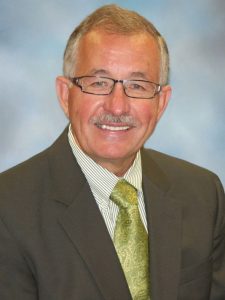By KATE JOHNSON
On April 7, a Catholic group, the “Friends of Cardinal Carlo Caffarra,” will be holding a conference in Rome in order to address the concerns they have about the direction the Catholic Church is heading under Pope Francis.
The group is named after recently deceased Cardinal Carlo Caffarra, who opposed the new ideas expressed by the Catholic Church and the way it was being led under Pope Francis. The conference in April is called “The Catholic Church: Where Are You Heading?”
The focus of the conference is to address the confusion in the Catholic Church. “Its subtitle, ‘Only a blind man can deny that there is great confusion in the Church,’ is taken from comments Cardinal Caffarra made in an interview with the Italian newspaper II Foglio in January 2017,” wrote the National Catholic Register.
A main issue that the organizers of the conference are hoping to find clarity around is interpretation of Pope Francis’ exhortation Amoris Laetitia, or “Joy of love.” The Pope broke down barriers and relaxed many of the previous principles for divorced and remarried couples within the Catholic Church in the exhortation.
“It is important that the divorced who have entered a new union should be made to feel part of the Church,” wrote Pope Francis in the exhortation. “The Christian community’s care of such persons is not to be considered a weakening of its faith and testimony to the indissolubility of marriage; rather, such care is a particular expression of its charity.”
The story has been covered among an array of Christian publications, some specifically Catholic and other’s nondenominational. The overall tone and language of the coverage of the upcoming conference varies greatly depending on if the news outlet is Catholic or nondenominational.
The Christian Post gave a very factual account of the conference and the issues it is aiming to address without inserting any opinion or biased language.
The first line of the article on the Christian Post reads, “A group of Catholics are planning to hold a conference in Rome next month in response to concerns they have about the direction of the Church under Pope Francis.”
The article on the Christian Post then follows with a series of quotes from Pope Francis’ exhortation and Cardinal Caffarra’s letter to Francis in response to the exhortation. Their article concludes, with results from a research study interviewing members of the Catholic Church.
“The Roman conference is coming not long after Pew Research Center released a poll finding that, five years since Francis became pope, a growing number of American Catholics have concluded that he is, among other things, ‘too liberal’ and ‘naïve,’” wrote Michael Gryboski for the Christian Post.
The National Catholic Register’s coverage of the story seemed biased against Pope Francis and focused mainly on why Catholics are disillusioned by the current pope.
The first line of the article on the National Catholic Register reads, “Lay faithful as well as members of the hierarchy, clergy and religious are being invited to participate in a Rome conference aimed at helping the Church find its way after the uncertainties of the past five years of Pope Francis’ pontificate.”
“The conference was one of Cardinal Caffarra’s last wishes after he had become deeply disillusioned by the crisis of confusion, most notably regarding the issue of giving the Eucharist to Catholics engaging in sexual relations outside marriage, such as remarried Catholic divorcees and cohabitating couples,” wrote Edward Pentin for the National Catholic Registrar.
LifeSiteNews is a Christian news outlet that offers a “Standard Edition” and a “Catholic Edition.” The story of the conference was covered in the Catholic Edition and contains much biased language against Pope Francis.
The first line of the article on LifeSiteNews reads, “It’s confirmed. On April 7, 2018 – the Saturday after Easter – a very special conference will be held in Rome whose aim is to indicate the path forward for the Catholic Church after the uncertain journey of the first five years of Pope Francis’ pontificate.”
Unlike all nondenominational coverage of the story, the LifeSiteNews article covers and explains ways in which some Catholics are seeking to reduce and limit papal authority after the exhortations of Pope Francis.
“In a Church seemingly in disarray, the key issue the conference will seek to address is the redefinition of leadership roles for the ‘people of God,’ the character and limits of papal authority, and forms of consulting the faithful on matters of doctrine,” according to LifeSiteNews.



